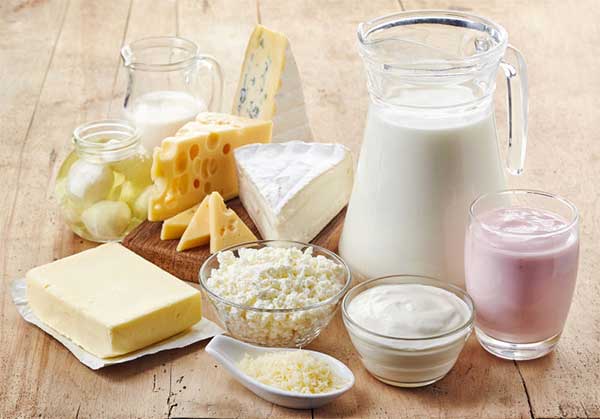Lactose (=milk sugar) is contained in milk and milk products as well as in foods and dishes made from it.
Normally, the disaccharide lactose is broken down in the small intestine by lactase, an enzyme produced in the intestinal villi, and absorbed into the bloodstream.
If there is too little lactase or no lactase at all, the lactose reaches deeper parts of the intestine undigested, where it is broken down by bacteria into gases (especially carbon dioxide and hydrogen) and short-chain fatty acids.
These fermentation products in turn cause an increased influx of water into the large intestine and can cause symptoms such as flatulence, soft, greasy stools or diarrhoea, abdominal pain (sometimes colicky),
but also fullness, nausea, belching and in rare cases constipation or vomiting. In addition, undigested lactose binds tryptophan to itself and prevents its absorption.
Since tryptophan is the raw material for the messenger serotonin and the sleep hormone melatonin, lactose intolerance can increase depression, pain and sleep disorders.

Nutrition for lactose intolerance
How much lactose can be digested is very different and depends on how much lactase is produced in the villi of the small intestine.
If there is a complete lack of enzymes, even small amounts (in the mg range) are not tolerated, although this is rare. 5-8g lactose distributed throughout the day are still well tolerated in many cases.
The individually tolerated amount should always be tested in each individual case - the best way is to avoid foods containing lactose completely in the beginning and then gradually increase the amount of lactose.
Decisive for the tolerance are the lactose content, according to the table, and the amount consumed. It also plays a role whether the milk product is eaten in isolation or combined with other foods,
which increase the time they remain in the intestine due to their fat, fibre, etc. content, leaving more time for lactase to break down lactose.